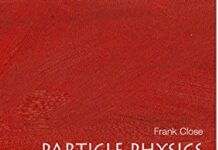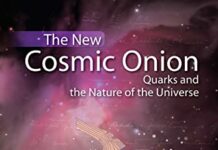
Ebook Info
- Published: 2010
- Number of pages: 193 pages
- Format: PDF
- File Size: 1.01 MB
- Authors: Frank Close
Description
What are neutrinos? Why does nature need them? What use are they?Neutrinos are perhaps the most enigmatic particles in the universe. Formed in certain radioactive decays, they pass through most matter with ease. These tiny, ghostly particles are formed in millions in the Sun and pass through us constantly. For a long time they were thought to be massless, and passing as they do like ghosts they were not regarded as significant. Now we know they have a very small mass, and there are strong indications that they are very important indeed. It is speculated thata heavy form of neutrino, that is both matter and antimatter, may have shaped the balance of matter and antimatter in the early universe.Here, Frank Close gives an account of the discovery of neutrinos and our growing understanding of their significance, also touching on some speculative ideas concerning the possible uses of neutrinos and their role in the early universe.
User’s Reviews
Reviews from Amazon users which were colected at the time this book was published on the website:
⭐Having spent more than a couple of decades in the Nuclear Industry long ago, I have always been fascinated by Nuclear Physics but had not been keeping up with progress in particle physics for many years. I was intrigued when I saw the title on Amazon and the reviews. I’ll admit that I have always been fascinated by the mystery of neutrinos. My first encounter was with how neutrinos fit in with Reactor Physics in the Navy Nuclear program as a reactor operator. I was fascinated that we lose about 10 MEV of energy per fission in a reactor to neutrinos out of about 200 MEV total energy. The energy is just gone, not even detectable with any instrumentation (except maybe in an atom smasher lab).I recall reading about some of the early work in a Scientific American article of trying to capture neutrinos from the Sun in a big tank of Carbon Tetrachloride deep in a mine back in the late 70’s or early 80’s. I also recall the levels of capture were much lower than expected and marveled at the concept of isolating a few atoms affected by a neutrino reaction out of several hundred thousand gallons of fluid. I believe the estimate in that article was that 97% of all neutrinos released in the center of the sun reached the surface of the sun without any interaction with matter at all. Now, name another particle that can top that! This book details the history of these experiments and all the mysterious outcomes and how they were resolved.One of the difficulties encountered was to overcome the momentum of “wisdom” about the neutrino counts from the sun before it was realized that neutrinos have a personality disorder and may oscillate between types since they have mass, albeit extremely small even compared to an electron. The evolution of detecting neutrinos and measuring their properties is fascinating as a subject of it’s own.If you have ever cared about neutrinos in any way, this book is a must read. The history of this 50 year plus investigation is clearly explained, with the horrendous trials and tribulations that go with it. I am absolutely amazed at what conclusions were reached by 2001. The idea of neutrino astronomy blows me away, the concept that our continuous monitoring of neutrinos from the Sun yield real time information from neutrinos about the current status at the center of the sun. The continued information being captured by these buried instruments regarding incoming cosmic rays interacting with our atmosphere to produce various energy levels of neutrinos. The ability to confirm theories of what happens in a super nova from the 1987 interception of neutrinos.I was delighted with the way the book is written for the most part, and truly appreciated the wealth of understanding and insight of neutrinos that the book provided in addition to the historical information on this subject. It gives closure on some of the many questions I had on neutrinos and how they relate to other areas of the current state of quantum mechanics and cosmology.
⭐My husband, a scientist, recommended this book for a prisoner who is trying to keep his brain going and educate himself. It was sent directly to the prisoner. So often books sent to them do not get through the mail room, the guards, or for some other reason. They need books and rehab programs so they are more likely to become responsible citizens once they are released to a world where employers often will not hire them and landlords will not rent to them.Fortunately the Supreme Court upheld the Constitution and California will have to reduce the number of prisoners it packs in like cattle at feedlots. Now, if we could somehow allow the prisoners to have Kindles or other electronic readers so they are not limited to ten books at a time (imagine living with only 10 books!). Of course, it would require a special cloud or procedures to ensure that prisoners do not communicate with those “outside”. Most prisoners want cells phones just to communicate with their families, but there are some that would use outside communication devices for crime.Thank you, Seller, for sending the book.
⭐I ordered this book to learn about the history of the neutrino. This was exactly what I wanted. I learned about the neutrino in my various upper division physics undergraduate classes but we only vaguely covered the history of the particle. Close begins his book with a bunch of attention catching information that really sparks your interest of this “ghost particle”. He then leads the reader through the history of the discovery of the neutrino in all of its trials and tribulations. All the while, describing at length, the preparations that the various scientists went through to discover this elementary particle. This book is a great introductory book into the history of the neutrino even if you don’t have a degree in physics. It’s nice and short but very detailed. Enjoy!
⭐The Mystical Quantum world has far more fascinating stories to tell than the wildest intrigue a human mind can imagine. One of the tiny but big characters in that fascinating world is the Neutrino, a vital part of the Jigsaw of Matter and Energy and one of the fundamental particles making up the Universe and Existence. The book starts you on an expedition with many scientists who went through a exploration journey into the Quantum world, and their real struggle to unravel the mystery of Existence and unblock the secrets of the Neutrino. Large Mines filled with liquid chlorine detergents, Nuclear Reactors, Solar Activity. This book reads like a detective story, each chapter stirring you up for the next. Wonderful.
⭐Very good history of neutrinos and role played in modern physics up to 2010.
⭐Just finished Neutrino and was very impressed. Total “thumbs up”! Frank Close writes in an historical account that through the recitation provides and encapsulated quick course on the subject that covers the material in such a way that you have an understanding of the concrete physics of the subject in a graded fashion that compresses nearly a hundred years of scientific struggle into a concise account that leaves one feeling they have a good understanding of both the history and the subject. On top of that Close has a droll sense of humor that had me laughing out loud at times. Great writer!
⭐Even though Neutrinos are ubiquitous, now you can have them all in one place. Neutrino has the whole story.I have previously read about Neutrinos in various books, but it was nice to have it all come together in Neutrino. Eventhough it looks like the Neutrino family will not explain dark matter by it’s self, the fact that they have a vanishing massand change their colors on the fly promises hints about what’s next beyond the Standard theory. Since the Neutrino’simportance is just beginning to be understood, no one wants to be left in the dark. You’ll find the story here all in oneplace.
⭐So densely packed is the information in this little book the author is to be commended for creating the literary equivalent of a neutron star. Indeed the scope of this short work is astonishing: covering such issues as reconciling the age of the sun with evolutionary timescales, supernovae, the discovery of radiation and the application of Newtonian physics and special relativity to the discovery of the neutrino.Physics aside, Close presents a compelling study of the serendipitous nature of scientific investigation both in terms of discoveries and the recognition given to the scientists who are the human protagonists in the drama. A success of the book is in celebrating the contribution of the likes of Pontecorvo and Bahcall, overlooked by the Nobel Prize committees but admired by fellow scientists.This book is detailed in the scientific methodology of neutrino detection but is equally focussed on the human circumstances associated with the research. The resolution of the missing solar neutrinos is balanced by the cruel irony that it led to unnecessary suspicions about the reliably of the use of chlorine as a means of detection which ultimately stripped the likes of Bahcall the recognition his calculations deserved.The author is gifted in being able to discuss such a wide spectrum of ideas in an effortless and succinct style. This is best evidenced in the brilliant description of the traversing of neutrinos from a supernova explosion 170, 000 light years across space juxtaposed against a description of the emerging evolution of humanity, before finally being detected in 1987.Although neutrinos may at first seem rather esoteric, Close is able to emphasise their scientific significance in for example neutrino astronomy which has been used to confirm scientific theories about supernovae and resultant neutron stars. He also highlights the future potential role of neutrino geophysics in enhancing the understanding of our own planet.
⭐Neutrino by Frank Close, Oxford, 2010, 192 ff.The story of the almost invisible particleBy Howard Jones`All in all, there are more neutrinos [in the universe] than any other particle’ (p.2): it sounds as though we ought to know a bit more about them. This is another in a series of books on quantum physics written by Frank Close, Emeritus Fellow in Physics at the University of Oxford . Close has spent his research career investigating and teaching the physics of subatomic particles and his writing is to be commended for its accessibility by the non-specialist, so we would be hard pressed to find a better authority on the subject of neutrinos.The details here however are a bit more specialised than in Close’s earlier books. The history of the discovery of neutrinos is as fascinating as that for antimatter, the subject of an earlier short monograph by Close. It shows the importance of chance or fate in being at the right place at the right time, but also the need for a prepared mind – a mind that is alert and open to new discoveries. But the background to the discovery of the neutrino needed an understanding of the nature of other subatomic particles first, as explained here by Close, so had to wait until the discovery of the neutron.The developmental work on neutrinos involved a study of the nature of the sun’s energy source, and even of the age of the Earth in finding theoretical evidence to back up the geological and evolutionary data suggesting an age of many millions rather than just thousands of years. The story of the role of one of the main players, Bruno Pontecorvo, is itself quite fascinating, especially to those of us who remember him as an Italian immigrant to Britain who defected to the Soviet Union around 1950. Establishing the existence of neutrinos (and their mirror-partners, antineutrinos) and methods to create and detect them almost at will has in fact given rise to the whole new sub-discipline of neutrino astronomy which enables us to get glimpses into the nature of distant galaxies. It has also given physicists a tool with which to investigate the `weak force’, one of the four forces of nature and the most difficult to study.This is a book for readers interested in modern particle physics and astronomy or in the history of science and the personalities involved.Dr Howard A. Jones is the author of The Thoughtful Guide to God (2006) and The Tao of Holism (2008), both published by O Books of Winchester, U.K.; and The World as Spirit published by Fairhill Publishing, Whitland, West Wales, 2011.
⭐The New Cosmic Onion: Quarks and the Nature of the Universe
⭐
⭐Antimatter
⭐Clear and enthusiastic description of the the things that have happened, all of the names, all of the physics( put simply ).Some important diagrams are there but you could read it without them. I loved them.
⭐So true that we should promote scientists and educators as the real value in this world. Why would someone devote their life to look for a ghostly particle that first lived in an equation? Because we have to know how our universe works! Religion just doesn’t have the answers (maybe it never did). This book exemplifies the curious men and women who continue to dig deeper into the fabric of this universe.The neutrino. Who would have thought it? A must read.
⭐Great layman’s introduction to this mysterious little particle. Well written with wonderful insight. Have previously read “Anti-matter”, also by Frank Close. Both were such a pleasure to read that I am about to start “Nothing: A very short Introduction”, another by Frank Close.
Keywords
Free Download Neutrino in PDF format
Neutrino PDF Free Download
Download Neutrino 2010 PDF Free
Neutrino 2010 PDF Free Download
Download Neutrino PDF
Free Download Ebook Neutrino




